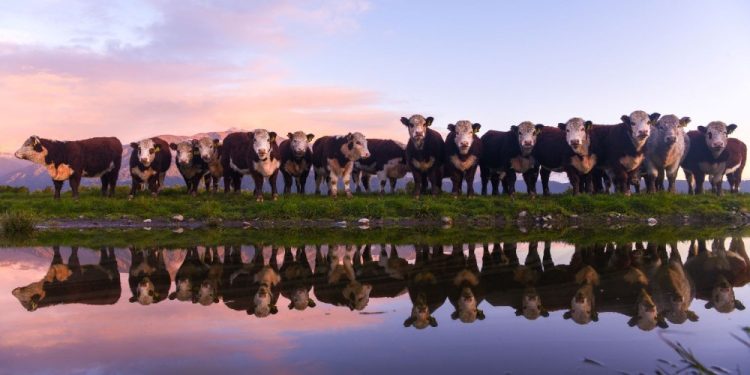The United States Department of Agriculture (USDA) recently released the July Cattle Report, which confirmed that the cumulative effects of drought the past two years have accelerated liquidation of the beef cattle herd.
According to the report, July 1 inventory of all cattle and calves was 98.8 million head, down two percent year-over-year. It added that the beef cow herd went down by 2.4 percent year-over-year, a decline of 750,000 heads from July 2021 to the current total of 30.35 million heads. Also, the current beef cow inventory has declined by 6.3 percent, or a total of 2.05 million heads. Beef replacement heifers were down by 3.5 percent year-over-year.
Feeder cattle supplies are estimated from the sum of inventories of other heifers and steers (over 500 pounds) plus calves (under 500 pounds) minus cattle on feed. The estimated July 1 feeder supply was down 2.7 percent from last year.
Derrell Peel, an agricultural economics professor and specialist in livestock marketing at Oklahoma State University, wrote in the farm journal AGWeb that June feedlot marketings were up two percent year-over-year while placements in June were down 2.4 percent from one year ago.
“This is the fourth consecutive month of lower feedlot placements. In the past two months, placements have consisted of increased numbers of cattle under 700 pounds with sharper decreases in placements over 700 pounds leading to an overall decline in placements. Placements would have fallen faster without lightweight placements. Increased lightweight placements now mean that fewer cattle will be available for placement later,” Peel said.
Cattle producers are destocking at a rapid rate as pasture conditions deteriorate rapidly. The volume of feeder cattle in Oklahoma auctions over the past two weeks is up 24 percent year-over-year. It appears that calves are being weaned and marketed early.
Health Ranger Mike Adams disclosed in his situation update podcast that several Texas cattle raisers confirmed to him that cattle liquidation in the area is up by 80 percent.
“This is happening due to the extended drought affecting Texas, Oklahoma, and much of the southern and western parts of the country. The drought not only reduces grass production in the fields being grazed by cows, but it also causes hay production to plummet, reducing the future food supply that could keep cows fed through the fall and winter,” he said.
Adams said this will cause a temporary glut of beef in the food supply chain and would lower beef prices in the short term. But by the year 2025, the prices will surely skyrocket as cattle remain in short supply.
“It takes several years of good rain to replenish cattle populations and bring beef prices back into an affordable range,” the Health Ranger said.
“Panicking” Texas ranchers sell off cattle as hay and water supply dwindle
North Texas ranchers have been forced to make some really tough decisions, like selling off their cattle, due to very limited hay and water supply brought by the expanding summer drought. (Related: Drought-stricken Texas finally gets some rain, but it may not be enough to save crops and cattle.)
Grass has stopped growing with no rain and high temperatures. Grasshoppers have reportedly been destroying what’s available in some counties. Stock ponds are now starting to run low on water as well.
The drought has caused panic to most ranchers, driving them to sell off their entire herds as they do not have any other options. In the past few days, lines of trailers waiting to drop off cattle for auction have gone viral all over social media.
At the Decatur Livestock Market, owner Kimberly Irwin said trucks were stacked a mile in each direction, eventually unloading more than 2,600 animals, the highest numbers since the extreme drought of 2011. “You know, you want to hang on, but it’s just hard,” Irwin lamented.
She added that most of the cows have been older as owners are hoping they can keep the younger ones until conditions change.
“I don’t think it can break quick enough to save me, to tell the truth,” said Lee McLachlin, a rancher from Springtown.
McLachlin said he was holding off as long as he can with his cows, but he is aware that even a good rain now will not do much to bring the grass back quickly. He added that he is concerned about hay availability later in the year, with prices now already running over $100 per bale.
Visit FoodCollapse.com for more news related to the disruption of food supply and collapsing global food economy.
Watch the below video that talks about the current cattle liquidation situation in Texas.
This video is from the Health Ranger Report channel on Brighteon.com.
More related stories:
- Mass CATTLE deaths send shockwaves through food supply as speculation rises: Are they being poisoned on purpose?
- Texas drought could eclipse drought of 2011, the state’s worst on record.
- US crops, cattle herds at risk due to “intense heat and dry conditions.”




